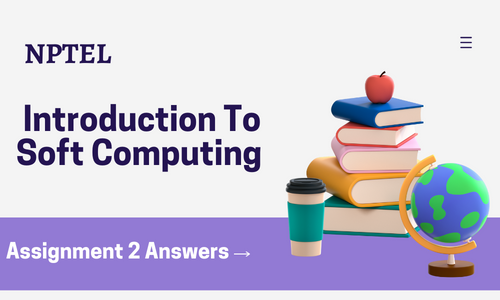Hello learners In this article we are going to discuss NPTEL Introduction To Soft Computing Assignment 2 Answers. All the Answers provided below to help the students as a reference, You must submit your assignment with your own knowledge and use this article as reference only.
About the course:-
Soft computing is an emerging approach to computing which parallel the remarkable ability of the human mind to reason and learn in an environment of uncertainty and imprecision. Soft computing is based on some biological inspired methodologies such as genetics, evolution, ant’s behaviors, particles swarming, human nervous systems, etc. Now, soft computing is the only solution when we don’t have any mathematical modeling of problem solving (i.e., algorithm)
NPTEL Introduction To Soft Computing Assignment 2 Answers 2024:
1. What is the primary difference between crisp propositions and fuzzy propositions?
Answer :- c
2. In the context of fuzzy logic, which operation evaluates the minimum membership value at each point?
Answer :- b
3. Which of the following operations is NOT associated with the T-norm operator?
Answer :- c
4. Given the conditional statement “If a student studies hard, then they will pass the exam,” and the observation that “the student did not pass the exam”. What is the valid inference using Modus Tollens?
Answer :- a
5. Given two fuzzy sets:
A ={(a1,0.3),(a2,0.6),(a3,0.8)} , B={(b1,0.4),(b2,0.5)}
find R=(B×A) ?
Answer :- a
6. Which of the following defuzzification methods is not a centroid method?
Answer :- d
7. Consider the two fuzzy sets

Using Zadeh’s notations, the fuzzy set A∪B into λ –cut sets for λ = 0.7 is
Answer :- d
8. Which of the following is the correct mathematical expression of the COG method?
Answer :- a
9. What is the following sequence of steps taken in designing a fuzzy logic system?
Answer :- a
10. A fuzzy conjunction operation denoted as t(x,y) and fuzzy disjunction operator denoted as s(x,Y) from dual pair if they satisfy the condition:
Answer :- c

